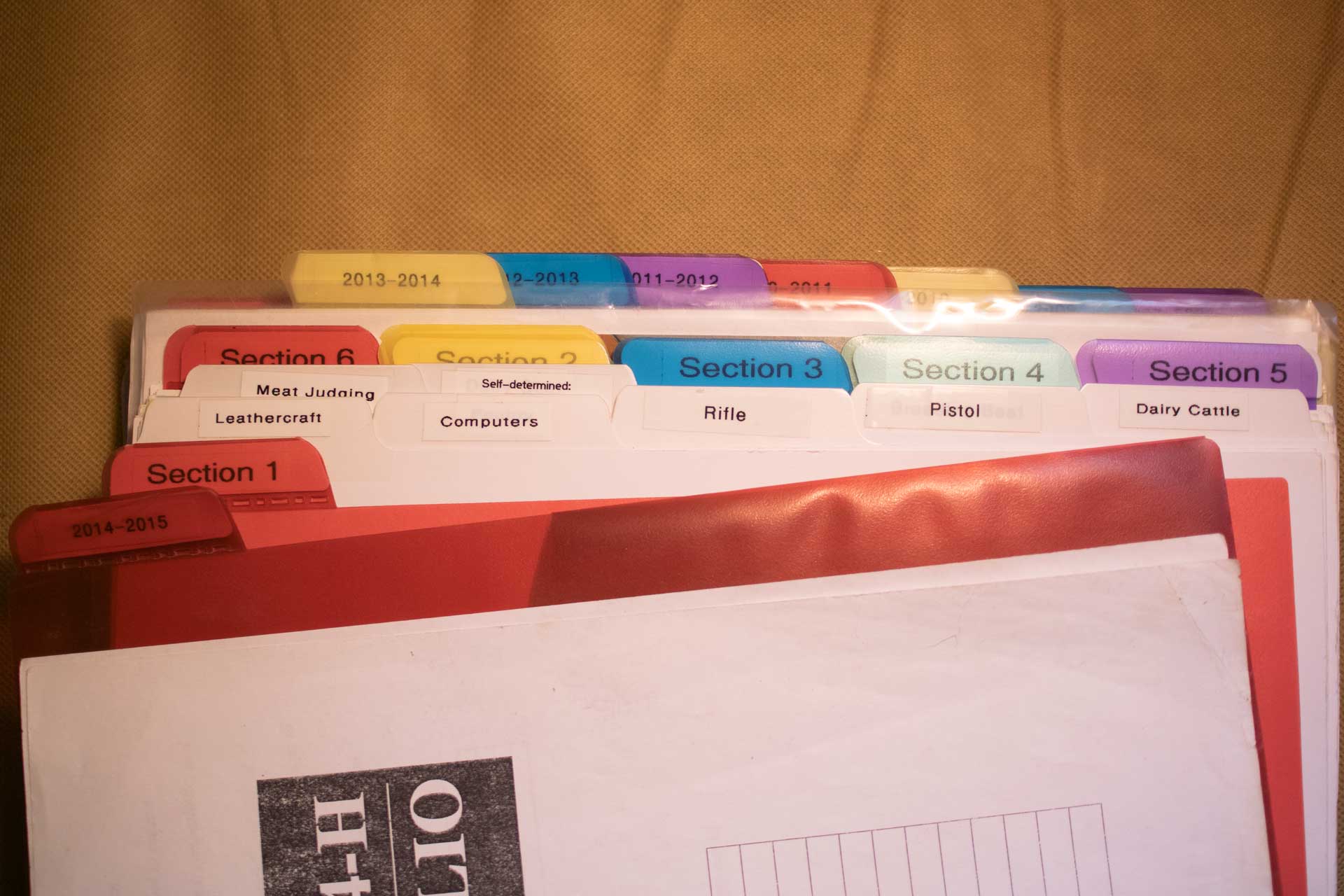Tips and Hints for Record Books ● Stuff that didn't fit in anywhere else
Handwriting
Handwriting your record book can help your book feel more real and authentic if done right. In other words, handwritten records are more likely if you are keeping records throughout the year and adding them to your book right away (especially in the cumulative sections). If you do handwrite your record book, practice your handwriting so that it is very readable. The judges aren't trying to place books on penmanship, but if they can't tell what the records behind that scrawl are, they will likely discard it.
How to organize a record book
Record books can be organized (or disorganized) in a plethora of ways. Generally, the best organized record books fall into one of two organization schemes. The first scheme sorts the records by section, then project (within Section 1), then year. The second scheme sorts the records by year, then section. Both schemes present the most current information first, regardless (reverse chronological order, like a resume). Below you can see the structure of both schemes for someone who's been in 4-H three years with three projects each year.
Sort by Section (The Junior Method)
-
Section 1
-
Breeding Beef
- 2012-2013
- 2011-2012
- 2010-2011
-
Rifle
- 2012-2013
- 2012-2012
- 2010-2011
-
Leathercraft
- 2012-2013
- 2012-2012
- 2010-2011
-
-
Section 2 (Cumulative)
-
Section 3 (Cumulative)
-
Section 4 (Cumulative)
-
Section 5 (Cumulative)
-
Section 6
- 2012-2013
- 2012-2012
- 2010-2011
-
Section 7
- 2012-2013
- 2012-2012
- 2010-2011
I refer to this as the Junior Method because it works well for members who have been in 4-H for only one or two years, but generally becomes unruly after three years of keeping a record book. This is especially true, because the judges can more easily flip between years within the same section and see the growth that has occurred in the early years of that project. After three years, it becomes better to use the Senior Method.
Sort by Year (The Senior Method)
2012-2013
Section 1
- Breeding Beef
- Rifle
- Leathercraft
-
Section 2 (Cumulative)
-
Section 3 (Cumulative)
-
Section 4 (Cumulative)
-
Section 5 (Cumulative)
Section 6
Section 7
2011-2012
Section 1
- Breeding Beef
- Rifle
- Leathercraft
Section 6
Section 7
2010-2011
Section 1
- Breeding Beef
- Rifle
- Leathercraft
Section 6
Section 7
This method shifts the focus to the current year (which is more appropriate as members mature), eliminates redundancy in the structure, and is especially helpful for members who have added and dropped projects throughout their 4-H career (as any real person would). Note that the cumulative sections remain cumulative and are placed in the current year even though they contain records for all years.
To tab or not to tab
The best place to keep your record book is in a physical three-ring binder. That way, you can access it any time, add pages as needed, and keep everything in the proper order. The extension office may have handed you a record book held together with a staple or paperclip, but that doesn't mean it should stay that way! The three-ring binder becomes an incoherent mass of papers without some form of guides, however. To tame the reams, the record book committee strongly recommends the use of tab dividers. Notice in the image how well-organized the record book already appears and it hasn't even been opened yet.
